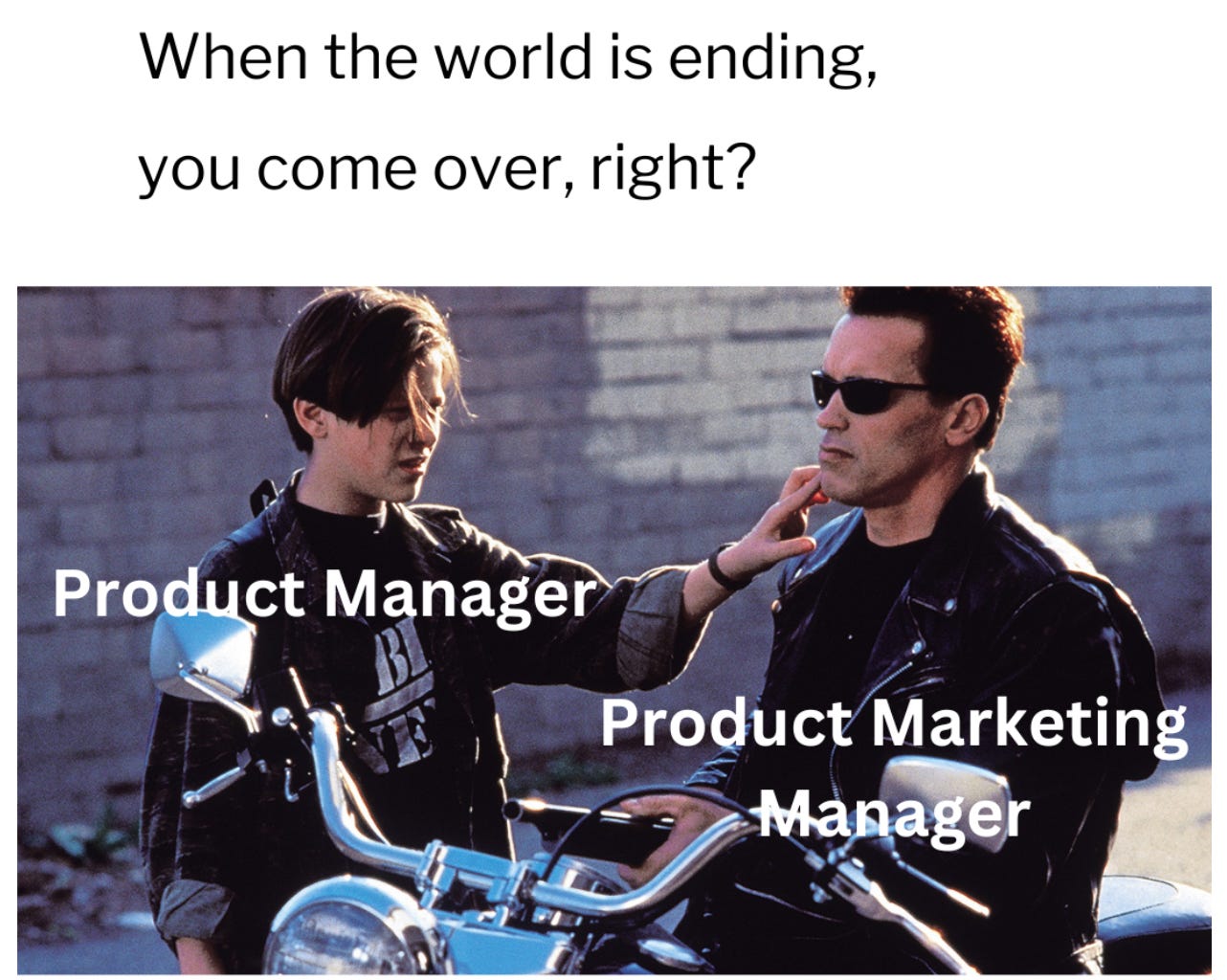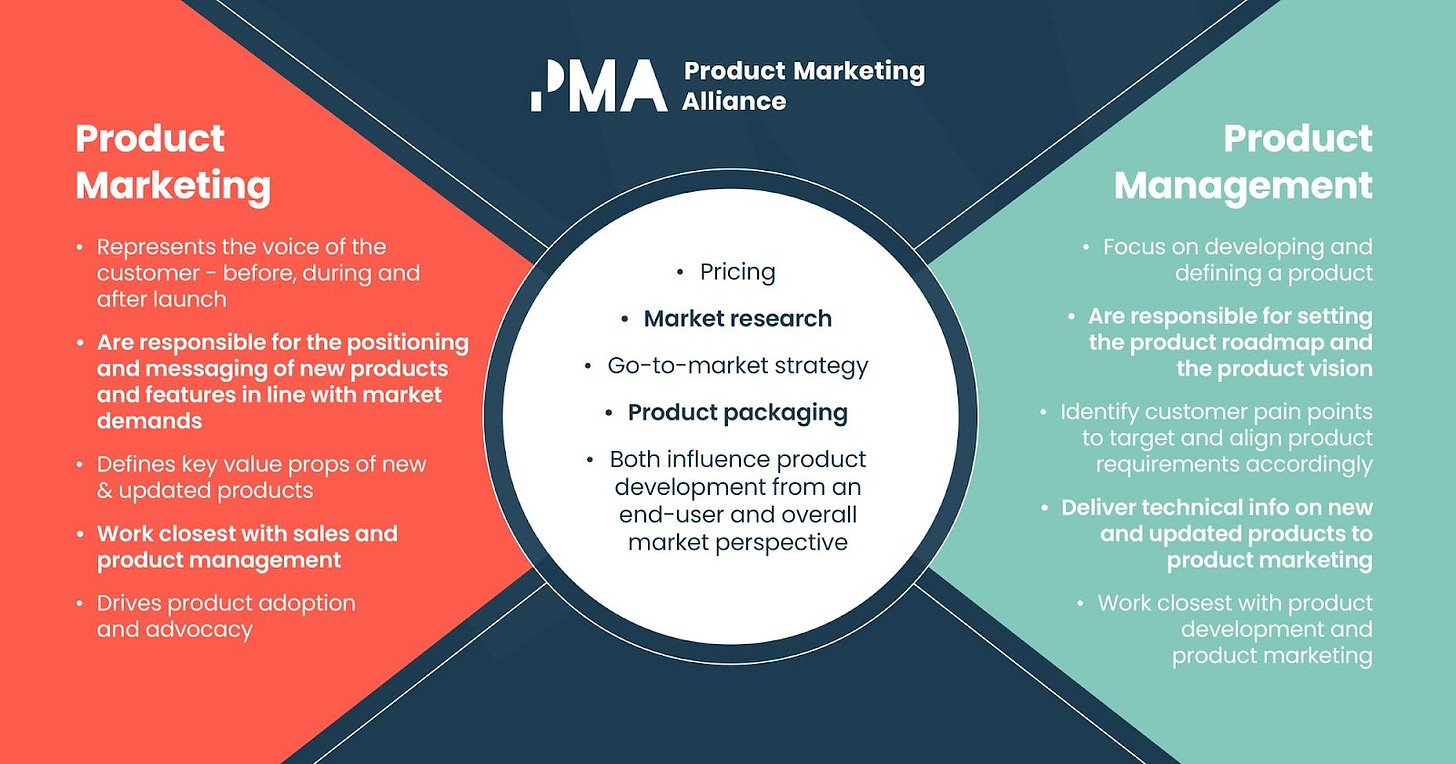PMMs, Want to Stop Fighting Fires? Get Closer to Your PM.
Let’s be real — despite countless efforts to define best practices, PM-PMM collaboration is rarely straightforward. Every company, every team, and every product has its own dynamics. Instead of forcing a rigid process, the key is to adapt and speak your PM’s language. Master this, and you’ll not only elevate your role but also become indispensable to your team.
The cross-functional goal of PMM?
“Move beyond execution and become a true strategic partner.” Well, if you want of course. Some PMMs are quite happy to be a writer, designer, and general PM assistant. And nothing is wrong with it.
“By aligning expectations, embedding collaboration into the product lifecycle, and positioning yourself as a strategic partner, you can go from being a tactical executor to an essential driver of product success.”
Why PM-PMM Collaboration Often Fails
After working across multiple products, I quickly realized that collaboration styles vary wildly — not just between companies, but even between individual PMs!
I’ve worked in pair with four amazing PMs only in the last three years, each with different expectations of the PMM role and collaboration. This doesn’t necessarily mean I had to change what I usually do as a PMM with each PM, but rather made me adapt to the new way of working and educate them on how I could contribute to the team and product success so it's easier for them to adapt to working with me as well.
Here’s what most PMMs struggle with:
❌ Being excluded from product launch timing decisions, leading to last-minute chaos.
😨 Limited involvement in Go-to-Market (GTM) strategy, weakening positioning and messaging. Some companies don’t trust the PM role enough or don’t even know this should be done by PMMs and delegate this responsibility to various other roles. In best case its PM but it could also be Sales, Marketing and yes, Engineering.
😵💫 Being seen as just a designer or copywriter rather than a strategic partner.
So, what do you do if you find yourself sidelined? How can you create a flourishing relationship to cobuild and -ship amazing products?
The Choice That Changes Everything
You have two options:
Accept the status quo and just execute tasks as they come.
Take control and establish a structured, strategic collaboration process.
Choosing the second option is a game-changer. By redefining your role and clearly communicating your value, you can transform the way PMs view and work with you.
How can you do this? Let’s dive into the responsibilities of both roles.
This is where our beloved community defines roles of PM & PMMs:
By who really sets these rules and why shall one follow them? In reality, who owns what and when during the product development lifecycle stage depends on:
Current needs of the company.
Previous experience of both PM and PMM with the other roles.
Personal talents and skills.
The roles of people from other departments in the same company.
So, instead of enforcing a rigid structure and responsibilities, why not build your own winning partnership?
The Ultimate PM-PMM Collaboration Framework
Here’s how to make collaboration work (and make your PM your biggest ally):
1. Speak Their Language
Understand their product development process. Each PM works differently — some asynchronously, some iteratively. They use different methodologies of writing tech documentation, shipping the product, working with a team (even if they work in the same company!) Learn their terminology.
Clarify expectations at each stage, so you can proactively contribute instead of reacting at the last minute. And do this from the start.
Clarify the timeline. Chances are you’ll hear something like ‘we don’t know yet when this happens’, however, don’t give up - propose a few scenarios of the launch based on the timelines and what they can expect based on this. Try to get at least approximate timing - for example, if you are planning for Q3, try to get ‘mid of August’ answer.
💡 Pro Tip: Not sure when the product will launch? Suggest different launch scenarios based on typical timelines!
Identify what’s not working and propose solutions early. No matter how hard you tried to set the right expectations, planning each stage of the product launch, sometimes things goes wrong. Make sure you inform PM about the risks as soon as you spot them and come up with a few aversing strategies.
2. Implement a Clear Collaboration Structure
To create alignment, I built a free PM-PMM collaboration framework that maps out responsibilities at each product development stage.
Download it below or leave a comment to receive the Miro template.
🎯 Want a template version of this? Comment ‘Framework’ below!
3. Set the Collaboration Up for Success
Prepare your PMs for this shift: Show them how structured alignment benefits both sides.
Use past launches as examples: Highlight previous challenges and show how this framework could have improved results. Basically, you can just fill this out using the recent launch experience - what did you do at each stage of the product lifecycle, what did they do, what would you wish to do different for all future launches.
Might seem small, but can structuring your discussions with PMs can make your life much easier - so do send a pre-read before meetings. In my experience, PMMs are usually more structured than PMs, so make sure you keep an agenda doc attached to all meetings and ask PMs to contribute their input beforehand.
Final Thoughts
PM-PMM collaboration doesn’t have to be a battle. Maybe PM is there to save the world, but would they succeed as fast as the world needs it without PMM’s skills and knowledge?
Share this with your beloved product marketing manager or product manager, if you have one.
🚀 Want more insights on driving high-impact launches? Subscribe for deep dives, real-world examples, and proven frameworks that help PMMs thrive.




